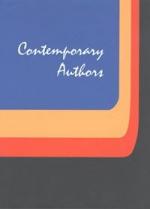|
This section contains 3,768 words (approx. 13 pages at 300 words per page) |

|
SOURCE: "Saving the Day: The Recordings of the Reverend Sutton E. Griggs," in PHYLON: The Atlanta University Review of Race and Culture, Vol. XLVII, No. 2, June, 1986, pp. 159-66.
In the following essay, Tracy offers a look at Griggs's style as a preacher.
Although critics as early as Sterling Brown in 1937 recognized the artistic deficiencies of Sutton E. Griggs, they have also recognized that Griggs at times transcended these artistic limitations by striking an early, semi-militant stance in literature—as a political novelist, adversary of Thomas Dixon, and champion of fictional heroes with black pigmentation.1 Hugh Gloster wrote that "American Negroes who espouse black beauty, black pride, black militancy, and black separatism are ideological successors of Dr. Sutton E. Griggs," at least the Griggs of the early novels.2 Robert Bone agreed with this assessment, though he identified in Griggs a vacillation between militancy and accommodation, a vacillation that was...
|
This section contains 3,768 words (approx. 13 pages at 300 words per page) |

|


